Superstudio: Another Mirror Image
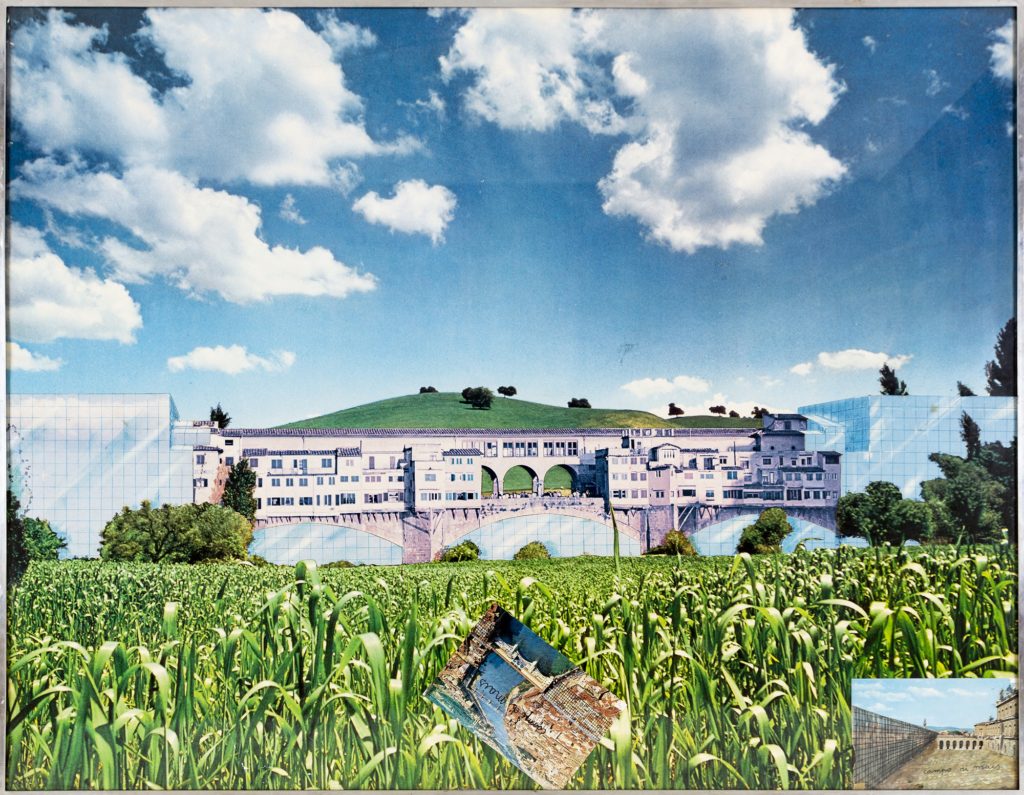
Superstudio’s Campo di Mais is a hybrid of the group’s concepts and a treasure trove of unintended (and unforeseeable) references. As such, it is a quite perfect Superstudio collage – another mirror image inviting the observer to reflect their own coordinates of understanding the world through the group’s ambiguous visual storytelling. Allegedly lent to client Banca Toscana for a photo shoot to complement the interior of the bank’s branch designed by Superstudio, it only resurfaced after 50(!) years to be returned to Adolfo Natalini, making it one of the least known yet most exciting collages of the Radicals that still awaits to be recognized as part of the Superstudio canon.
In the collage we see II Monumento Continuo – here in the stage of transition towards L’Architettura Riflessa, the grid still visible but the white surface already specular – embracing Florence’s Ponte Vecchio, the Arno riverbed beneath overgrown by a field of maize. The Continuous Monument has come back home, one could say, after travelling around the globe, it arrives again where it all started. The river as the epicentre of Florence’s Great Flood of 1966 – its aftermath a cornerstone of the Superstudio group’s founding myth – all but vanished, cultivated and tamed. The city of Florence all but gone, turned into rolling green hills under bright blue, cumulus clouded skies.
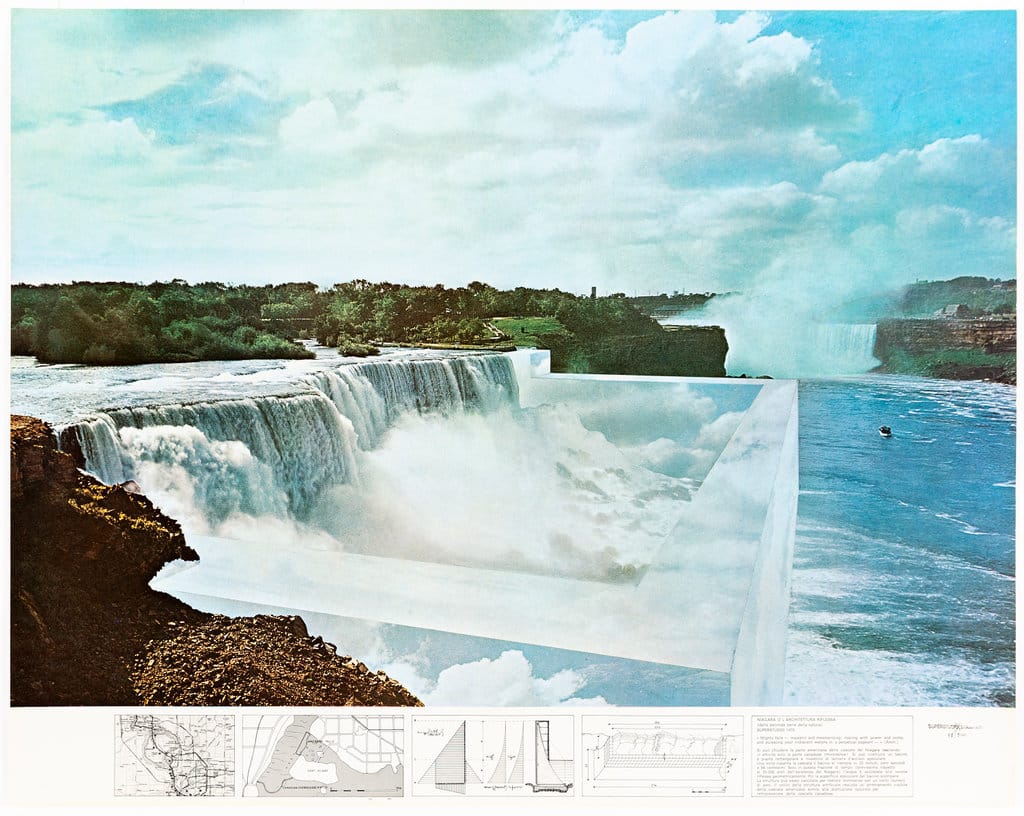
In Superstudio’s collages of II Monumento Continuo we would usually see a megastructure making its way around the globe, through deserts, mountains, cities, sometimes running along other infrastructures, sometimes above it but very seldom incorporating existing architectures. In Adolfo Natalini’s Sketchbook 11 from 1969, we can find an exception in a drawing of The Continuous Monument wrapped around Palladio’s Palazzo Chiericati in Vicenza, safeguarding Palladio’s design in a tender gesture.
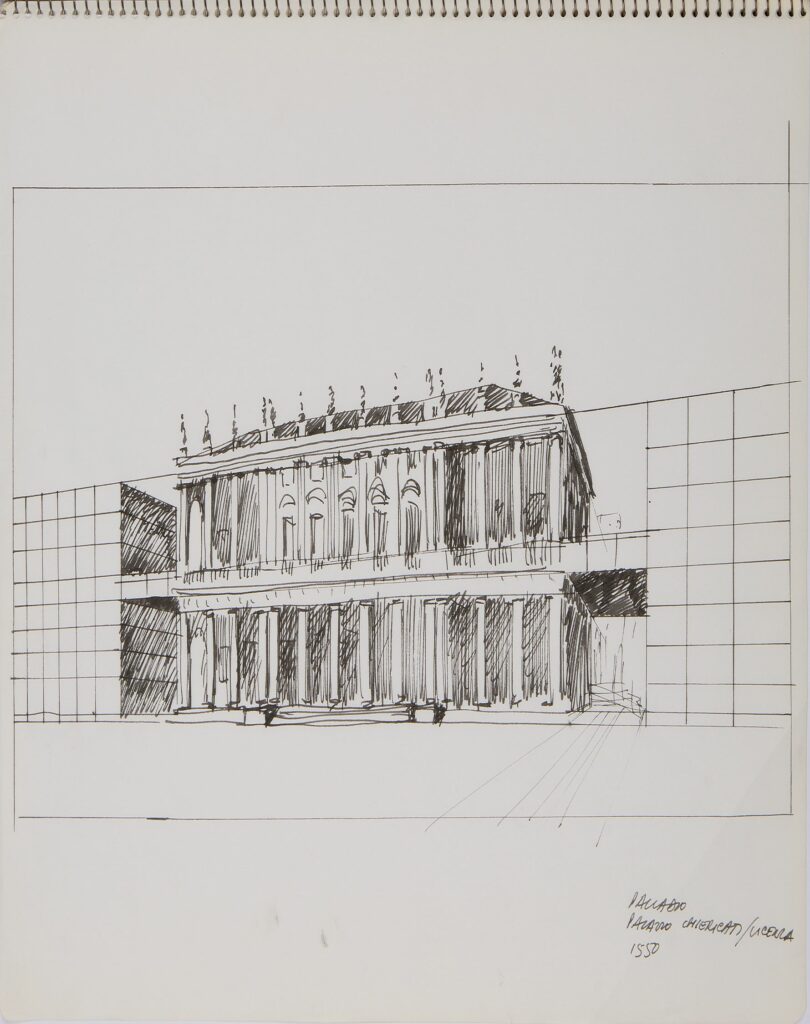
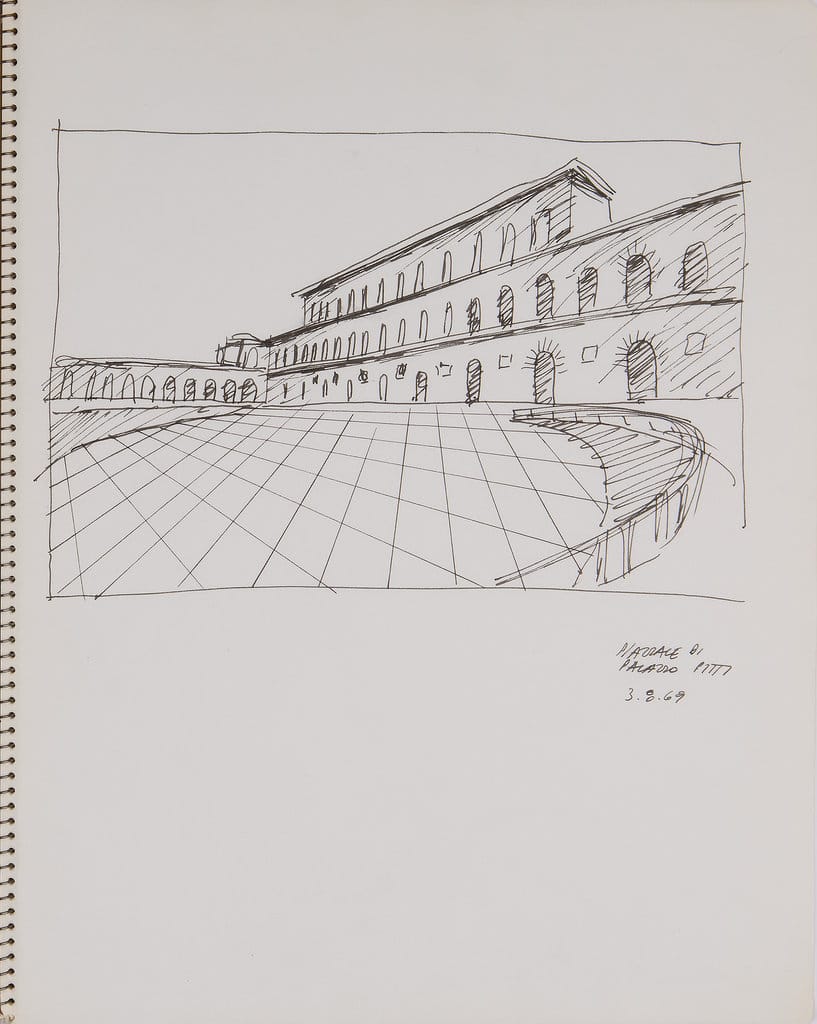
The same tenderness is applied to Ponte Vecchio in Campo di Mais. The Monument is cradling the bridge: an architecture, conceived to end all architecture, preserving another forever, creating a post-historic stasis, presumably extending the Corridoio Vasariano to globe-spanning dimensions. The field of maize in the riverbed – perhaps a nod to fellow Florentine radicals 9999’s 1971 collage Venezia, where the Venice laguna has turned into a field of wheat – adds to the somewhat dystopian paradise depicted.
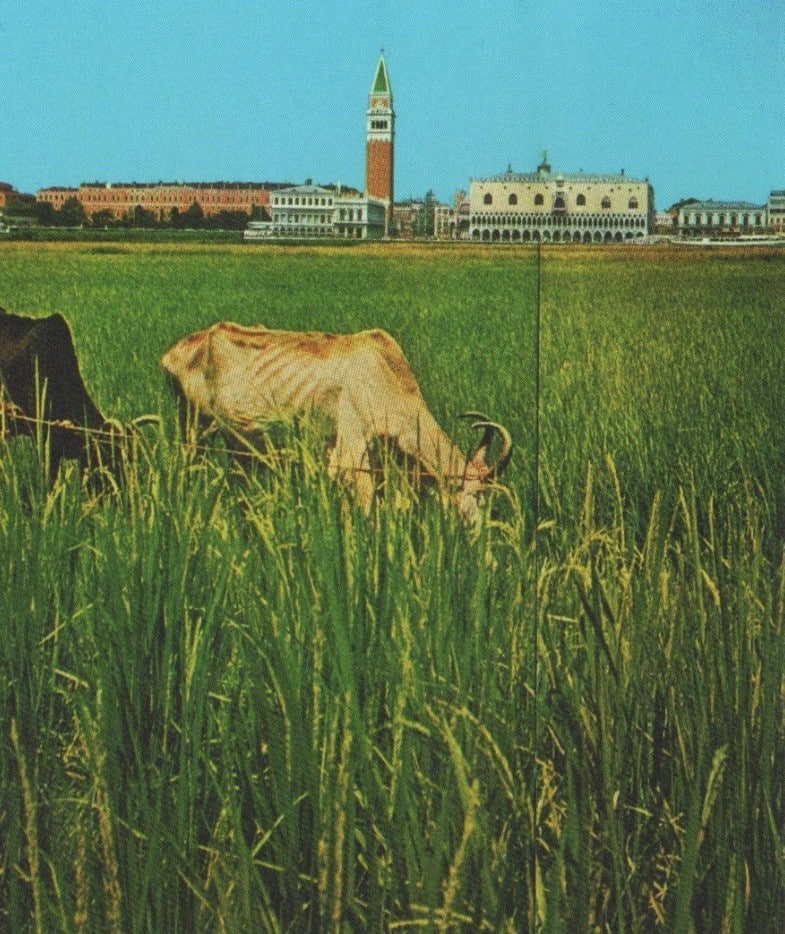
Later, in 1982, with Wheatfield – A Confrontation: Battery Park artist Agnes Denes would actually create just such a situation in real life in New York: On the western side of lower Manhattan she cultivated a large plot against the backdrop of the World Trade Center towers. The iconic photos of the performance, showing the city’s skyline rising out of the lush green field, questions the interrelation and interdependencies of architecture and nature – just as Campo di Mais, showcasing once again the speculative capacities inherent in every Superstudio collage.
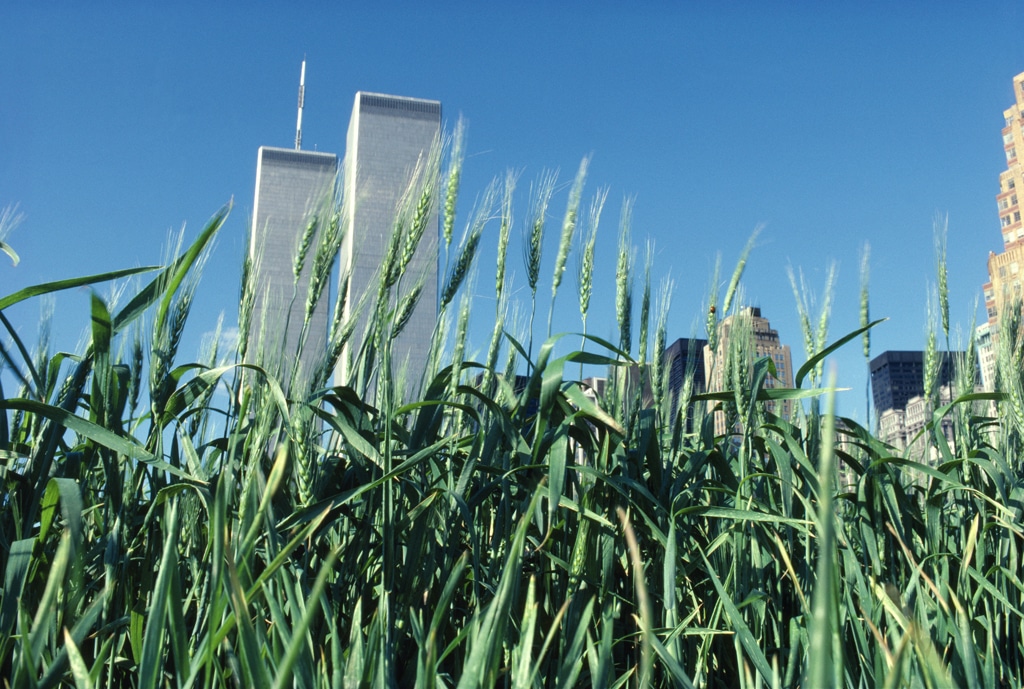
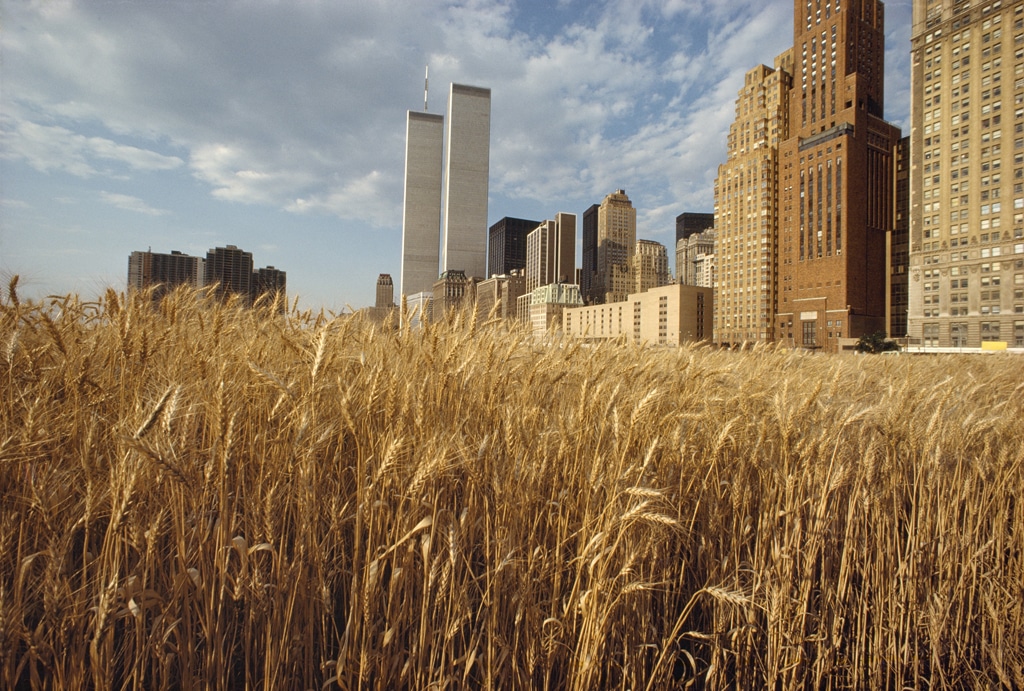
The nature/architecture antagonism highlights a longing in the collage’s experimental set-up of objects and landscapes, a deep sadness, with the Ponte Vecchio offering a last, nostalgic glimpse into a world passed. It may no longer be a human but any other species observing this scene: A bridge for no river, an architecture for no one. Yet, looking at the collage today, there is comic relief to all this bright coloured pessimism. Doesn’t the sky and hill background resemble almost too exactly the pre-installed desktop image to every computer running Microsoft Windows in the 2000s?
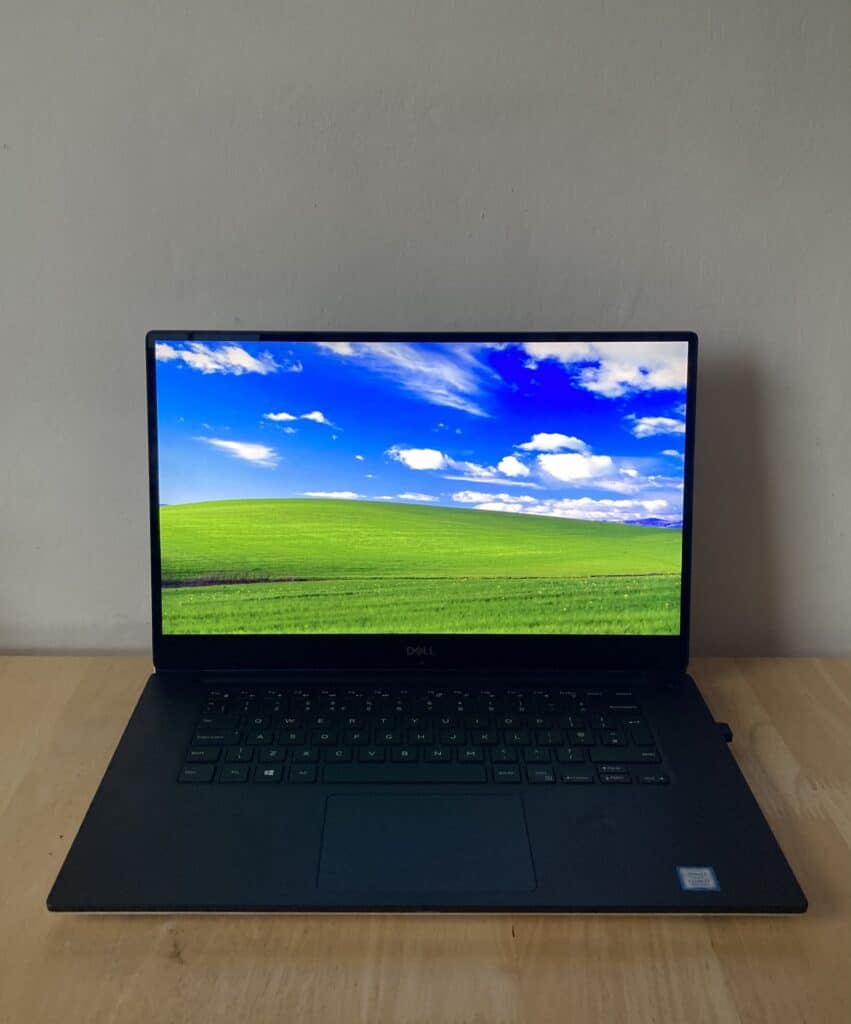
The photograph, called Bliss by Charles O’Rear, is probably one of the most ignored yet most known images of the last decades. Also, it’s nothing but a backdrop to please and not disturb, solidified global visual consensus, ornament to the proliferation of invisible all-engulfing communication technologies. As if Superstudio would have known all along. In Campo di Mais we are thus not only witnessing the final merger of nature and architecture, of historic and post-historic infrastructure but also of analogue and digital space: The collage’s backdrop only a virtual image dropped on a digital desktop. Another mirror image in an infinite present.

– Cameron Lintott